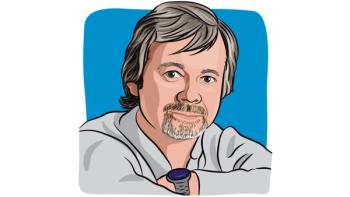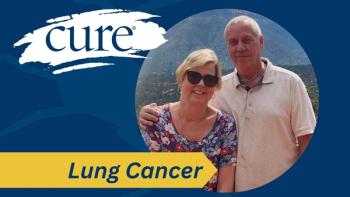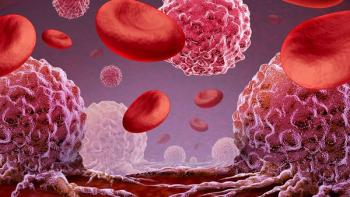
- CURE® Summer 2022
Desperate Measures Have Led Patients With Cancer to Turn to Crowdfunding to Raise Money for Necessary Care
Many patients with cancer who have limited financial resources or high insurance co-pays have started to use crowdfunding campaigns to pay for the daunting bills associated with their treatment and subsequent care.
Until the 1990s, there was no such thing as crowdfunding. Financially compromised patients with cancer relied on help from friends and relatives, bake sales, art and craft fairs, garage sales and other in-person events to raise money for their treatments.
But in 2010, GoFundMe was established and is now the largest crowdfunding platform in the world. It changed the way many patients with cancer raise funds for their care.
One reason so many patients resort to crowdfunding is the
There are really innovative and groundbreaking technologies here in the United States,” notes Breyer. “Those surgical techniques and advanced medical care can lead to prolonging the life of or even curing cancer patients.”
The downside, of course, is the expense.
And it’s not just the uninsured who are affected, according to Dr. Andrew J. Cohen. “Even when patients have insurance, there are co-pays and coinsurance fees that need to be covered,” says Cohen, director of trauma and reconstructive urologic surgery at Johns Hopkins Medicine in Baltimore and lead author of the 2019 study.
“Here at Johns Hopkins, we see patients from all over the country with rare cancers,” he explains. “To come here, they have travel expenses, hotel fees, child care expenses, and have to deal with the time taken off work.”
Desperate Times, Desperate Measures
Cohen reveals that many patients who turn to crowdfunding have already tried every other avenue of fundraising and have reached the limit of their energy and resources.
“These are individuals who are at the end of their rope, facing the toughest challenge of their lives,” he says. “Some have had to sell their possessions and declare bankruptcy. Others have eliminated all leisure activity, and still others have had to cut back on food purchases.”
The need for crowdfunding, Cohen notes, is a commentary on society and how the public takes care of those who are ill.
“The fact that people have to go this route tells me we’re not doing as good a job as we could be — it really puts an asterisk on our current health care system.”
“Contributions come from a somewhat limited pool, and people can only give so much, so campaigns really end up jostling for attention,” he explains. “But one of the great aspects of it is that a site like GoFundMe is massive, so you get to tap into a very large pool of people who can potentially help you.
“Those who are technologically literate, who are in tune with social media and who have large social networks are more likely to reach their goals. Unfortunately, sometimes we Americans have trouble asking for help.”
Double Whammy
That was the case for Susel Gonzalez, a 46-year-old elementary schoolteacher from Austin, Texas, who never imagined she’d have to ask anyone for financial assistance. Although she chose teaching rather than one of the more lucrative careers selected by her college classmates, it paid the bills and helped her feel she was making a difference.
But in January 2022, she began feeling so exhausted that she made a doctor’s appointment and learned she had a massive paraesophageal hiatal hernia — which is when the upper part of the stomach protrudes through an opening in the diaphragm into the chest — that was causing esophageal bleeding. Gonzalez needed three blood transfusions to restore her hemoglobin level and underwent a hernia repair procedure in April.
But that wasn’t the end of it. During a physical before her surgery, Gonzalez told her internist that she’d had painful menstrual cramps for years, so she was referred to a gynecologist specializing in pelvic pain. The doctor prescribed tests to check for pelvic dysfunction, including a pap smear and ultrasound. She also ordered an endometrial biopsy.
When the test results came in, Gonzalez learned she had endometrial cancer. “If it hadn’t been for the pain, they wouldn’t have found the cancer until it was too late,” she says.
With two upcoming surgeries to pay for in addition to post-surgical care, Gonzalez’s friends urged her to set up a crowdfunding campaign. Although she had donated to others’ campaigns, she resisted because the prospect of requesting money for herself was daunting.
“I felt very exposed, vulnerable and embarrassed,” she remembers. “It’s pretty terrifying because you’re a teacher, you’re educated, you’re supposed to be a productive member of society.”
A Reluctant Campaign
But because of a number of factors beyond her control, such as the skyrocketing rent at her apartment complex and the cost of the special diet required in the lead-up to surgery, Gonzalez felt as if the walls were closing in. She recalls coming home on a Friday to no hot water in her apartment because of an unresponsive management company, only to find another stack of bills in the mail.
“I just felt so overwhelmed and I broke down in my living room. I remember thinking, ‘I can’t do this alone. I’m going to need help,’” she says.
Her friends and co-workers immediately rallied. Her best friend, knowing she was reluctant to ask others for money, reminded Gonzalez of the donations she had made in the past. “She asked me if I thought less of the people who’d reached out for help,” says Gonzalez.
The last thing someone newly diagnosed with cancer needs is
“I had to upload a photo, and I was still feeling guilty about it, so I thought, ‘If you’re going to go full grifter, put up a cute photo of you and the dog,’” she says. “Then I wrote up my story and uploaded it. I had to prove my identity by uploading a picture of my driver’s license and give them a bank statement to prove it was my account. It was actually surprisingly simple to set up.”
An Unwelcome Surprise
Leslie Hughes also found the process easy when creating a campaign for her 30-year-old photographer boyfriend Elliott Howell. The 34-year-old writer met Howell four years ago when she, as Howell puts it, “slid into my DMs.”
Hughes said they met in person and then connected on Instagram, which was “so millennial of us.” She recalls picking Howell up at the airport when he returned from a five-day trip on March 13 only to awaken to him having a seizure around midnight. “It was absolutely terrifying,” she recalls. “I didn’t really understand what was going on.”
At UCLA Health’s emergency department, a scan showed a tumor in Howell’s brain, but doctors believed it was benign. When the couple were referred to a surgeon a week and a half later, however, they learned it was anything but. “He said that from the scans, it looked like stage 3 cancer, and he wanted to get Elliott into surgery as soon as possible,” says Hughes.
A Different Set of Concerns
Younger patients face a unique set of challenges after a cancer diagnosis, says Lauren Ghazal, a research fellow at the University of Michigan School of Nursing’s Department of Systems, Populations and Leadership. Ghazal, herself a cancer survivor, led a 2022 study of young patients with cancer to determine their perceptions of medical crowdfunding.
“We looked at young adults 20 to 39 years old,” she says. “The good news is that due to treatment advances, young adult cancer survivors are living longer than ever before. But they also face unique hurdles and are burdened by those challenges.”
Their diagnoses come at a time of milestones such as completing their education, living on their own, establishing employment and romantic relationships and sometimes starting a family, Ghazal explains. A cancer diagnosis short-circuits that process.
“It creates a pretty big financial shock to your quality of life and then you have to struggle through our complicated health care system,” she notes.
As with most patients who turn to crowdfunding, younger people are often averse to asking for help. Perhaps they’ve recently moved out of their parents’ house, are finally on their own and are looking forward to taking care of their own affairs.
“You’re trying to be financially independent but then you get sick and have to lean on others for help. Our study showed that there are huge psychological implications in having to ask others for money,” Ghazal says.
Pushing Through the Resistance
Hughes explains how she has experienced what Ghazal was referring to.
“I hate asking for money,” she says. “It makes me uncomfortable. I don’t even ask my parents for money, let alone friends or strangers. It felt really weird for me, even though the GoFundMe campaign was on behalf of Elliott. But in the end, I realized we had to move forward because he needs the money to help him through this, and if other people can do it, so can we.”
The couple are fortunate to have an extensive friend network at home in Venice, California, and they made good use of it. One friend who knew someone who’d crowdfunded told them their original goal amount of $10,000 to $15,000 was way too low and suggested increasing it to at least $125,000.
Hughes put her travel writing on hold to care for Howell, but she put her writing experience to good use crafting Howell’s campaign. “At first I geared his story more toward friends,” she says, “but realized there would be donors who didn’t know Elliott, so I went further and told his whole story.”
Howell notes that he is grateful for all the help.
“Her skill set makes her very good at crafting the story,” he says. “I want to give her full credit for putting the story down and letting people follow along in my journey. And she’s been constantly updating it, which is something I probably wouldn’t be doing. My writing skills are terrible.”
Because wording is so crucial in telling a patient’s story, Hughes suggests retaining a writer if they’re unsure how to proceed. Patients may also look at other crowdfunding sites to get ideas on how others communicated their personal story.
Gonzalez highly recommends crowdfunding to anyone in financial distress from a cancer diagnosis and hopes telling her story will help those thinking of trying it. Although it may be difficult, Howell recommends trying to stay as positive as possible.
As he wrote in an Instagram post: “I’m setting my sights on the moon, the path we call life that is ahead of me, and whatever adventures, travels, friendships, and connections await. I hope that anyone reading this is moved to do the same.”
For more news on cancer updates, research and education, don’t forget to
Articles in this issue
over 3 years ago
Using Effective Cancer Therapies Earlier — Does It Always Work?over 3 years ago
How Patients With Cancer Can Best Care For Their Chemo Portover 3 years ago
Uncovering New Ways to Make Cancer Surgery Saferover 3 years ago
Teaching Others Through Cancer Advocacy




